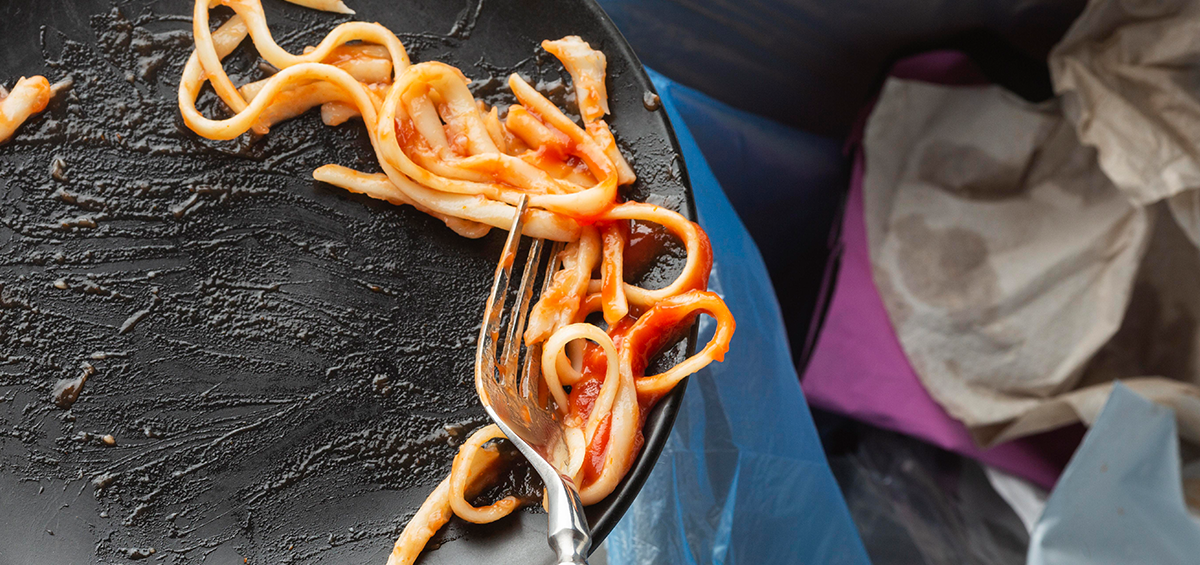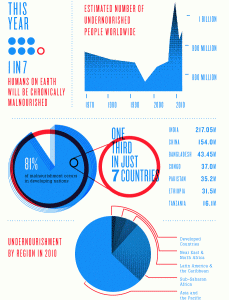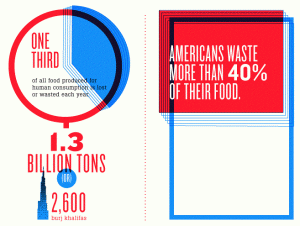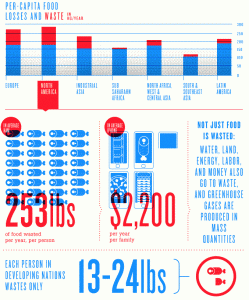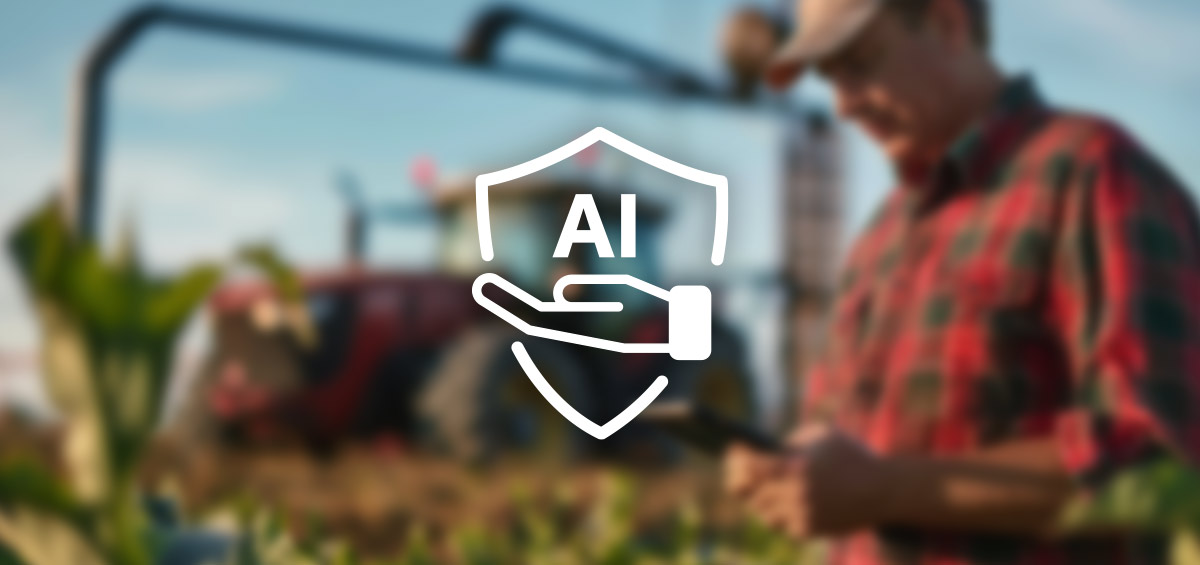Of all of the issues facing the planet, few seem more urgent than the global food shortage. Sufficient food – our single most vital need as living creatures – eludes the grasp of nearly 1 billion people, a problem that may worsen as the population rises. But even more disturbing is the other side of the food crisis coin – the incomprehensible amount of food that’s wasted every year by the nations who have the most to spare. How is it possible that so much is wanted while so much is wasted? This question may be one of the defining problems of the 21st century.
Information about malnourished people
Though economic difficulties can make access to food a problem anywhere, it is in developing nations that food shortage is most widespread. ”Developing nations” are often defined as those with a gross national income of less than $4000 per person. But here’s the twist – there is already, technically, enough food on earth to feed everyone. The problem isn’t just production – it’s economic inequality. And the wealthy nations that control the most food waste nearly half of it.
How much food is wasted
Food waste and food loss
Total food waste and loss is split evenly between developing and industrialized nations. However, developing nations waste much more on a per capita basis.
Food losses and waste per-capita
Infographic created by: Public Health Degree
The impact of food waste is not just financial. Environmental, food waste leads to wasteful use of chemicals such as fertilizers and pesticides; more fuel used for transportation and more rotting food, creating more methane – one of the most harmful greenhouse gases that contribute to climate change. Methane is 23 times more potent than CO2 as a greenhouse gas. The vast amount of food going to landfills makes a significant contribution to global warming. Over 100 million tonnes of food are wasted annually in the EU (2014 estimate). If nothing is done, food waste is expected to rise to about 126 million tonnes by 2020. Wasting food is not only an ethical and economic issue, but it also depletes the environment of limited natural resources. All actors in the food chain have a role to play in preventing and reducing food waste, from those who produce and process foods (farmers, food manufacturers and processors) to those who make foods available for consumption (hospitality sector, retailers) and ultimately consumers themselves.
Food waste facts
- There are nearly one billion malnourished people in the world, but the approximately 40 million tonnes of food wasted by US households, retailers and food services each year would be enough to satisfy the hunger of every one of them.
- The irrigation water used globally to grow food that is wasted would be enough for the domestic needs (at 200 liters per person per day) of 9 billion people – the number expected on the planet by 2050.
- If we planted trees on land currently used to grow unnecessary surplus and wasted food, this would offset a theoretical maximum of 100% of greenhouse gas emissions from fossil fuel combustion.
- 10% of rich countries’ greenhouse gas emissions come from growing food that is never eaten.
- The UK, US and Europe have nearly twice as much food as is required by the nutritional needs of their populations. Up to half the entire food supply is wasted between the farm and the fork. If crops wastefully fed to livestock are included, European countries have more than three times more food than they need, while the US has around four times more food than is needed, and up to three-quarters of the nutritional value is lost before it reaches people’s mouths.
- All the world’s nearly one billion hungry people could be lifted out of malnourishment in less than a quarter of the food that is wasted in the US, UK and Europe.
- A third of the world’s entire food supply could be saved by reducing waste – or enough to feed 3 billion people; and this would still leave enough surplus for countries to provide their populations with 130 percent of their nutritional requirements.
- Between 2 and 500 times more carbon dioxide can be saved by feeding food waste to pigs rather than sending it for anaerobic digestion. But under European laws, feeding food waste to pigs is banned. In Japan, South Korea and Taiwan, by contrast, it is mandatory to feed some food waste to pigs.
- 2.3 million tonnes of fish discarded in the North Atlantic and the North Sea each year; 40-60% of all fish caught in Europe are discarded – either because they are the wrong size, species, or because of the ill-governed European quota system.
- An estimated 20-40% of UK fruit and vegetables rejected even before they reach the shops – mostly because they do not match the supermarkets’ excessively strict cosmetic standards.
- The bread and other cereal products thrown away in UK households alone would have been enough to lift 30 million of the world’s hungry people out of malnourishment
- 4600 kilocalories per day of food are harvested for every person on the planet; of these, only around 2000 on average are eaten – more than half of it is lost on the way.
- 24 to 35% of school lunches end up in the bin.
AGRIVI – the most powerful farming software is changing the way food is produced, try it out and convince yourself:
